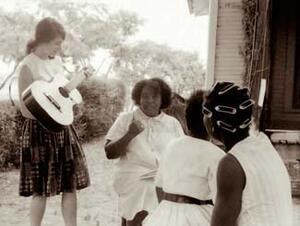"Living the Legacy" sets the record straight
I was sitting in a meeting about a pilot project on gender in Jewish education a few years ago when a male colleague interrupted to proudly announce the release of his new book, a compilation of essays that he edited about Jewish education in North America. Naturally, I flipped through the hot-off-the-presses volume and searched for women writers. To my surprise, there was not even one. I asked the man why there were no women among the fifteen or so authors. His boss, the organization’s director who was sitting across from me, replied candidly, “We could not find any suitable women.” I told him he should have asked me; I would have gladly supplied some names. Indeed, the first thing I did that night when I got home was compile a list of 30 top women thinkers, educational professionals and leaders who could easily write or speak on issues of Jewish education, and I sent it to the men. I never heard back from them. (And tellingly, the gender project never got off the ground.)
I do not really know why women are so invisible, but the phenomenon is frighteningly rampant. Just yesterday, a feature story in Yediot Aharonot on the strange eating habits of famous chefs in Israel interviewed 12 men and no women. Zero! Sometimes it feels like unless women are dressed like Lady Gaga, their work will continue to go unnoticed.
This is why JWA’s new curriculum, Living the Legacy, is so important, and such a vital contribution to the way history is taught. The curriculum makes invisible people visible, especially women. Revisiting the way the Civil Rights Movement is traditionally taught, the curriculum brings to the fore the work of women, many of whom worked behind the scenes and sacrificed their own well-being for the sake of others’ freedom. As Judith Rosenbaum so beautifully describes in her blog post, the curriculum features personalities such as Freedom Rider Judy Frieze Wright, who was arrested for sitting with black people in a bus station in Jackson, Mississippi, and Heather Tobis Booth, who participated in the 1964 Freedom Summer Project as a volunteer to register African Americans to vote and to run "Freedom Schools". The women’s narratives, she writes, “remind us that Jews comprised approximately half of the white Freedom Riders; they should also remind us that the Jewish Freedom Riders included young women as well as men.”
Living the Legacy tells the stories of women – and men – whose actions were perhaps not in the center, and shows portraits of sometimes unnamed women acting out of their own commitment of conscience despite prevailing ideologies. It thus sets the record straight once and for all and lets students know that women are out there, working and doing and changing the world, and have been out there all along, whether or not men took notice.
Moreover, the curriculum gets students into the habit of seeking out the unseen. This is especially valuable in our nanosecond-attention-span culture in which people are not trained to make an effort to delve deeply or look too far behind the headlines. This curriculum instead brings the richer understandings to the fore and instills a more profound heroism into the hearts and minds of students. It reminds students to look beyond the limelight, to seek out those who are not necessarily spending all their time trying to get noticed. It provides the kind of inspiration garnered from real stories of regular people acting not for their own personal advancement but for the betterment of humanity. Now that is a lesson that deserves to be taught.
Elana Maryles Sztokman is an educator, researcher, writer, and contributor to The Sisterhood blog.







Ì¢âÂå¢A place of our own : the rise of Reform Jewish camping : essays honoring the fiftieth anniversary of Olin-Sang-Ruby Union Institute, URJ, in Oconomowoc, Wisconsin edited, with an introduction by Gary P. Zola and Michael M. Lorge (Tuscaloosa, Alabama: The University of Alabama Press, 2006).
I guess women had nothing to say about Jewish camping either. Thank you for "Living the Legacy"